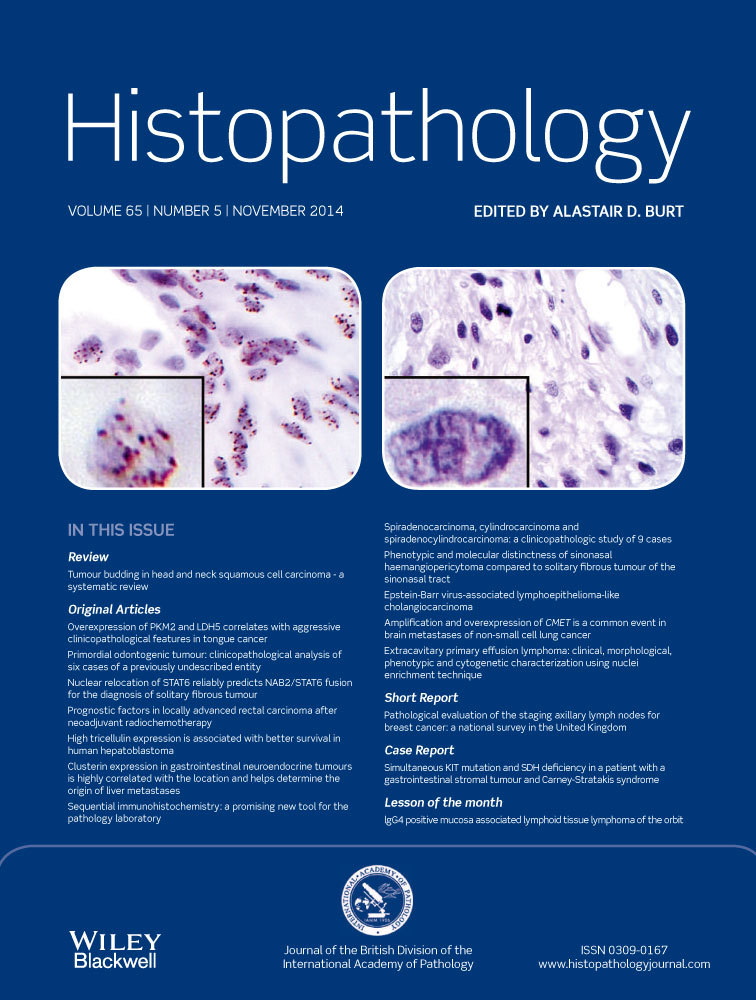Phenotypical and molecular distinctness of sinonasal haemangiopericytoma compared to solitary fibrous tumour of the sinonasal tract
Abstract
Aims
Sinonasal haemangiopericytoma (SN-HPC) is a rare sinonasal mesenchymal neoplasm of perivascular myoid cell origin. Solitary fibrous tumour (SFT) occurs only very rarely in the sinonasal tract. SFT and soft tissue HPC have been considered a single entity. Recently, recurrent gene fusions involving NAB2-STAT6 resulting in differential expression of STAT6 were characterized as central molecular events in SFT. However, no data exist for NAB2–STAT6 status or STAT6 expression in SN-HPC.
Methods and results
We examined six SN-HPCs and two sinonasal SFTs by immunohistochemistry and RT–PCR for NAB2–STAT6 fusions. SN-HPC affected three females and three males (mean age: 72 years). They expressed smooth muscle actin, lacked strong CD34 reactivity and were negative for nuclear STAT6 expression. RT–PCR analysis confirmed the absence of NAB2–STAT6 fusions in all cases. Conversely, both sinonasal SFTs (in males aged 39 and 52 years) displayed classical features of pleuropulmonary and soft-tissue SFTs (uniformly CD34-positive with strong nuclear expression of STAT6). RT–PCR revealed NAB2–STAT6 fusions in both cases.
Conclusions
These findings confirm the molecular and phenotypical distinctness of these two entities. While SN-HPC is a site-specific sinonasal neoplasm of as yet unknown molecular pathogenesis, sinonasal SFTs show phenotypical and molecular identity to their pleural/extrapleural counterparts.




